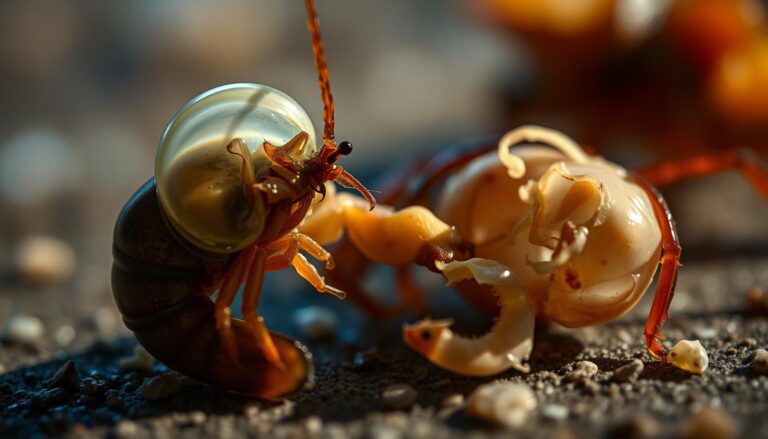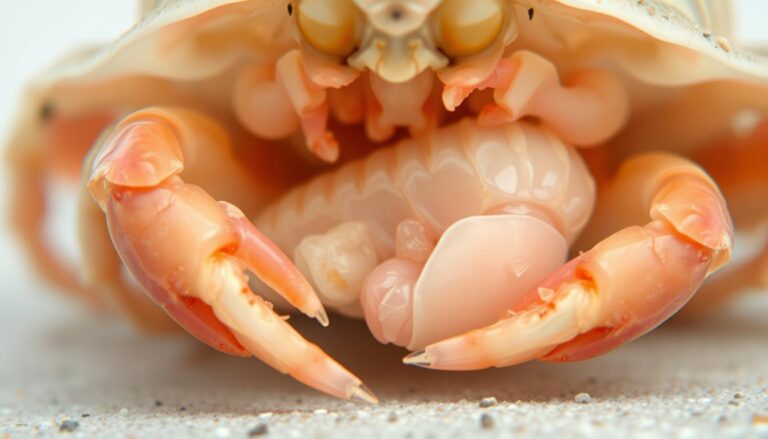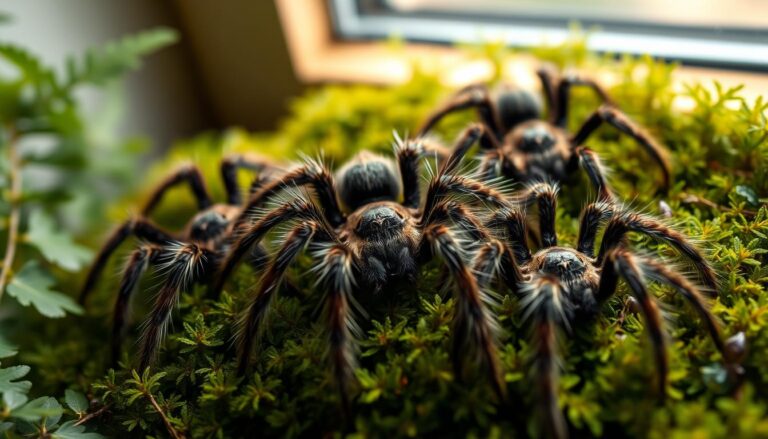Recognizing Tarantula Pre-Molt Stages: What to Look For
Have you ever wondered why your eight-legged pet suddenly stops eating or becomes unusually inactive? These subtle changes could indicate a critical phase in their life cycle. Understanding the molting process is essential for ensuring the health and survival of your arachnid companion. For new owners, behavioral shifts like fasting or hiding can be alarming….
Have you ever wondered why your eight-legged pet suddenly stops eating or becomes unusually inactive? These subtle changes could indicate a critical phase in their life cycle. Understanding the molting process is essential for ensuring the health and survival of your arachnid companion.
For new owners, behavioral shifts like fasting or hiding can be alarming. However, these are often natural signs that your pet is preparing for molting. With over 15 years of expertise in arachnid care, this guide will help you identify these stages and provide the right care during this delicate time.
From physical changes to species-specific variations, we’ll cover everything you need to know. Proper handling during this phase is crucial, as molting makes your pet highly vulnerable. Stay informed and ensure your arachnid thrives through every stage of its life.
Key Takeaways
- Recognizing molting stages is vital for your pet’s health and survival.
- Behavioral changes like fasting are common and natural.
- Proper care during molting prevents risks and ensures safety.
- Species-specific variations may influence the molting process.
- Expert guidance helps navigate this delicate phase effectively.
Understanding Tarantula Pre-Molt: An Overview
Molting is a natural process that plays a vital role in the growth and survival of arachnids. It allows them to shed their old exoskeleton and replace it with a new one, enabling continued growth and development. For tarantulas, this process is essential to maintain their health and adaptability.
The frequency of molting varies significantly across different life stages. Young spiderlings, often referred to as slings, molt monthly to support their rapid growth. In contrast, adult tarantulas typically molt once a year. Adult males, however, may only molt once after reaching maturity due to their shorter lifespans.

The premolt phase can last anywhere from two weeks for juveniles to two months for adults. During this time, arachnids often exhibit behaviors like fasting or reduced activity. These changes are natural and should not cause alarm. For example, species like Grammostola rosea are known for extended fasting periods, which can be mistaken for health issues.
Environmental factors such as humidity and temperature also play a crucial role in molting success. Proper conditions ensure a smooth transition, while imbalances can lead to complications. Anecdotal evidence from experienced keepers highlights how a Lasiodora parahybana sling completed its premolt phase in just one month under optimal conditions.
Understanding these nuances helps owners provide the best care during this delicate phase. By recognizing the premolt stages and adjusting care routines accordingly, you can ensure your arachnid thrives throughout its life cycle.
Identifying Tarantula Pre-Molt Signs
Noticing subtle changes in your arachnid’s behavior can be the first clue to an important life stage. These shifts often signal the start of a natural growth process. Recognizing these signs early ensures you can provide the right care during this delicate phase.

General Pre-Molt Signs
During this phase, certain behaviors become more apparent. A loss of appetite is one of the most common signs, observed in 83% of cases. Your pet may also develop a shiny abdomen, indicating the formation of a new exoskeleton.
Other general indicators include lethargy and increased burrowing activity. These changes are natural and should not cause concern. For example, species like Grammostola rosea are known for extended fasting periods, which can be mistaken for health issues.
Advanced Pre-Molt Signs
As the phase progresses, more specific markers emerge. A darkening bald spot on the back is a clear indicator of new exoskeleton formation. Additionally, molt mats appear 24-48 hours before the actual event.
Another advanced sign is difficulty climbing due to reduced foot pad adhesion. This makes it harder for your pet to move around. Visual markers, such as an abdomen 1.5 times the size of the carapace, also signal the imminent phase.
| General Signs | Advanced Signs |
|---|---|
| Loss of appetite | Darkening bald spot |
| Shiny abdomen | Molt mats |
| Lethargy | Difficulty climbing |
| Increased burrowing | Enlarged abdomen |
Understanding these things helps you avoid misinterpreting species-specific behaviors. For instance, Grammostola rosea’s fasting periods are natural and not a cause for alarm. By recognizing these signs, you can ensure your pet thrives during this critical week.
How to Care for Your Tarantula During Pre-Molt
Caring for your arachnid during its growth phase requires attention to detail and timely action. This phase is delicate, and proper care ensures a smooth transition. Below are three critical steps to follow during this time.
Remove Prey Items
Live prey can pose a serious risk during this phase. Crickets, for example, can harm your pet within 15 minutes. Remove all live prey items within 24 hours of noticing any sign of this phase. This step minimizes stress and prevents potential injuries.
Maintain Proper Hydration
Hydration is essential for a successful molt. Ensure a clean water dish is always available. Clean the dish regularly to prevent contamination. Optimal humidity levels can reduce the risk of complications by up to 40%.
Avoid Disturbance
During this phase, your pet is highly vulnerable. Avoid handling or disturbing it. Post-molt, allow 5-7 days for the new exoskeleton to harden. Intervening too soon can cause harm. If you notice a stuck molt, consult expert guidance immediately.
- Remove live prey within 24 hours of suspected premolt.
- Keep a clean water dish and maintain optimal humidity.
- Avoid handling for 7 days post-molt to ensure safety.
Conclusion
Proper care during molting can make all the difference for your arachnid. Key indicators like web mats, dorsal positioning, and a shiny abdomen are reliable signs of this phase. Recognizing these changes ensures you can provide the right support.
Adopting a “hands-off” approach is crucial. Statistics show that disturbances during this time can lead to complications. Avoid handling your pet to ensure its safety and well-being.
For additional guidance, explore resources like Patreon magazines and YouTube tutorials. These tools offer valuable insights into arachnid care. Don’t forget to download our free chapter for more in-depth tips.
Remember, species-specific behaviors vary. Understanding these nuances helps you tailor your care routine effectively. Stay informed and ensure your pet thrives through every stage of its life.







